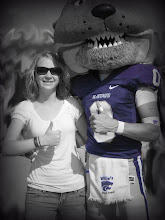Cashing in on individual cattle management
You cannot manage what you cannot measure – the simple principle of the Decatur Beef Alliance which aims to get progressive producers out of the commodity business and into the value-added beef business.
Since 1971 Decatur County Feedyard, just North of Oberlin, Kan, has been in the commercial feeding business under the leadership of owner Warren Weibert. The feedyard has a one-time capacity of 40,000 and is turned over about 1.75 times a year. The focus is on retained ownership customers and improving long-term profitability through information. Decatur County Feedyard began sorting cattle by ultrasound in 1987, and was the first commercial feedlot to sort cattle with a video scanner.
In 1994 the Decatur Beef Alliance was established and the facility invested in Micro beef Technologies’ ACCU-TRAC Electronic Cattle Management System as part of a Total Quality Management approach to beef production.
The alliance enables producers to maximize profit from the genetics bred into the cattle and strengthen the relationship between ranchers, feeders and packers. The program is rooted in the management principle that beef quality and consistency can’t improve, nor can profits, unless the information necessary for genetic selection is passed back to the producer.
“We focus on individual management,” says Director of Supply Development, Dan Dorn. “Our ultimate goal is to better the return to the ranch and increase the ranchers’ profitability.”
Dorn works with more than 200 regular customers spread across the U.S. from Florida to Hawaii, primarily involved with retained ownership. He works closely with cow/calf producers on advising, reviewing and offering recommendations for genetics and marketing.
According to Decatur County Feedyard results, individual management in the feedyard produces an average $15 per head performance advantage over group management. Timely marketing on a value-based grid system adds another $5 to $10 per head advantage. The greatest potential for higher profits however, is back at the ranch where genetic improvements based on individual performance and carcass data can bring another $50 per head profit. The wealth of individual performance data provides the producer the opportunity for another level of herd management.
The added profitability of retained ownership is also noteworthy. According to Cattle-Fax data, there’s an average $85 advantage per head in 18 of 23 years by retaining ownership of spring-born calves, weaned in the fall and harvested in the spring as yearlings.
To best achieve the alliance’s objectives, Decatur County Feedyard is home to a state-of-the-art processing facility using two parallel systems each with five Silencer chutes and each performing specific functions. The entire system allows complete automation, efficiency and low stress handling. The barn can run through 100 head per hour using one chute or 185 per hour using both.
“The entire system was designed with the livestock’s welfare in mind,” Dorn says. “When in use it runs like a well-oiled machine; everything is automated, it’s extremely quiet and fast.”
The animal passes through a video-imaging station which uses side and overhead video cameras to record length, width and height. The next station features scales and an electronic identification tag reader. The computer identifies the animal and adds its current weight and dimensions to its individual records. An ultrasound reader is used to measure backfat thickness at the following station and a final chute allows crews to perform vaccinating and implanting.
Based on weight, performance, body dimensions, backfat and economic projections, the computer system calculates an ideal shipping date for each animal. Upon exiting the barn the system automatically selects and opens one of six gates to sort cattle into the appropriate holding pen.
“Even if calves are the same age, they can grow and mature at different times.” Dorn says. “By sorting the cattle based on their specifications we can reduce inconsistency and manage each animal to its optimum endpoint. When looking at a pen in our yard, you might notice that the cattle are not uniform. But using the collected data we know that their optimum time for harvest will be the same.”
Because of the sorting process, it’s typical to sell a consignment of calves in four or five groups over a period of 60 days. Cattle are sold on a carcass merit formula to one processor.
“After all the cattle are harvested, you receive a ‘report card’ on each animal that enables you to change your breeding or management program to improve your net income in the future,” Dorn says. “The rancher receives performance carcass data on an individual basis including feed efficiency, average daily gain, treatment costs, yield and quality grade, ribeye size and hot carcass weight. Very few other feedlots provide the same services we do with regard to retained ownership.”
Data in hand and results on the books, Decatur County Feedyard customers have the opportunity to look at their herd in terms of and return to the ranch. “We essentially provide the producer with the data and resources for them to make objective decisions about their herd,” Dorn says. “We give them the tools to be progressive producers.”



No comments:
Post a Comment